#Best html css javascript tutorial online
Explore tagged Tumblr posts
Text
Best Free Online Web Tutorials: Learn Code for Free | WebTutor
Are you looking to learn web development and design but do not know where to start? Look no further than WebTutor, the best free online web tutorial platform available! With its comprehensive and user-friendly approach, WebTutor is the ideal platform for beginners and experienced developers alike to master web development and design skills. In this article, we will delve into the reasons why WebTutor is the top choice for aspiring web developers and designers.
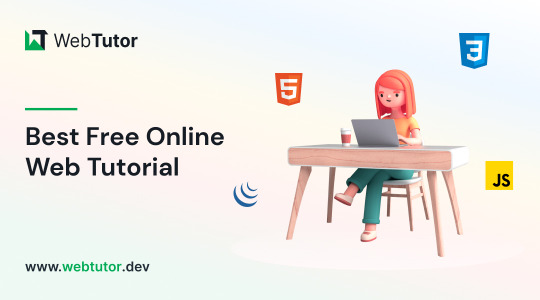
One of the standout features of WebTutor is its extensive curriculum that covers a wide range of web development and design topics. From HTML, CSS, JavaScript and jQuery to more advanced concepts, WebTutor has it all. The tutorials are carefully crafted to provide a step-by-step learning experience, making it easy to follow along and build practical skills.
WebTutor tutorials are designed to cater to all skill levels, whether you are a complete beginner or an experienced developer looking to enhance your skills. The platform offers tutorials with varying levels of difficulty, allowing learners to start at their appropriate level and progress at their own pace. Each tutorial includes interactive exercises and quizzes to reinforce learning, ensuring that you grasp the concepts thoroughly.
One of the key advantages of WebTutor is its free accessibility. WebTutor believes that knowledge should be accessible to everyone, regardless of their financial constraints. All tutorials on WebTutor are available for free, making it an ideal platform for self-learners, students, and anyone who wants to learn web development languages without incurring additional costs.
WebTutor also offers a highly intuitive and user-friendly interface, making it easy for learners to navigate through the tutorials and find the content they need. The platform provides a seamless learning experience with clear instructions, code snippets, and examples, allowing learners to grasp concepts quickly and effectively. The tutorials are also mobile-friendly, enabling learners to access the content on any device, anytime, and anywhere.
Another notable feature of WebTutor is its community-driven approach. The platform has a vibrant community of learners and instructors who actively participate in discussions, forums, and Q&A sessions. This fosters a collaborative learning environment, allowing learners to seek help, share insights, and engage in discussions with fellow learners and instructors. WebTutor community-driven approach enhances the overall learning experience, making it a supportive platform for aspiring web developers and designers.
In addition to its comprehensive curriculum, accessibility, user-friendly interface, and community-driven approach, WebTutor also provides regular updates to its tutorials to ensure that learners have access to the latest web development and design trends and technologies. This ensures that learners stay up-to-date with the latest best practices in the industry and are well-equipped to tackle real-world web development projects.
In conclusion, WebTutor is the best free online web tutorial platform that offers a comprehensive curriculum, accessibility, user-friendly interface, community-driven approach, and regular updates. Whether you are a beginner or an experienced developer looking to enhance your skills, WebTutor provides an ideal platform to learn web development and design. So why wait? Start your web development journey with WebTutor today and unlock your potential as a skilled web developer or designer! Visit http://www.webtutor.com now to get started.
#learn to code for free#coding course online#Online Web Tutorial#learn coding for free#online tutorial#learn code#learn code for free#school of coding#introduction to coding#learn html#learn CSS#learn JavaScript#programming training courses#how to learn coding for free#best way to learn coding#how long does it take to learn coding#learn coding for beginners#how long does it take to learn to code#learning how to code for free#how long to learn coding#why learn to code#best code learning websites#best coding language to learn first#best way to learn code#how long does it take to learn how to code#how to start learning coding#learn online coding#best online platform for learning coding#best place to learn to code online
0 notes
Note
how did you find the move from choicescript to twine?? I've been working on a project in choicescript but not really sure I want to host it there anymore
hello! thank you for the ask,
preface, i think both tools are great for what they were built for. i had a good time with choicescript and it was a good introduction to what variables can be used for and structuring an if game. if you don't care about UI/ appearance, then choicescript makes sense.
i will be real and say, the move to twine was difficult personally lmao because i had no experience with html, css, or javascript prior to the move -- but that shouldn't put you off. my personal approach to it was that it's a learning opportunity.
be prepared to be 'not good'. learning something new can be a really frustrating and discouraging process. things won't work the first time round, they never do, but keep reminding yourself that this is a process and the progress, and your understanding, will come with time! the best quality a dev can have is patience, especially in the if circle.
if you go into twine thinking about your long form game/project and try to port things immediately into a template, i think it will really mess with you. make something tiny first, like a tutorial game, and when you're ready move up to the long form stuff.
you don't have to do it my way, but the best way for me to learn was to just get hands on with twine templates other developers have made. get a feel for the twine programme, language, layout, interface etc etc. i will tell you right now the second day i started learning twine/ sugarcube i got stuck on how to //open// an imported file haha. learning is hard and it sucks but now i've built my own interface for my own game!
all this being said, you don't even HAVE to build an interface for your game -- it comes with a default UI that you can start using straight away. so, if you don't care about the ui/ aesthetics, twine can still be an option.
i do want to touch on publishing, because that is a huge aspect of if. twine is a free open source tool and choicescript is not. if you get to the point where you finish a game and can publish with cog/ hosted games, then just be aware that you do not //own// your own writing because it is in the choicescript language. you will only own the IP.
i was stubborn about choicescript for a very long time, i still think it has better accessibility //because// the interface is basic and the appeal of going through a publishing house is very understandable. they have a huge reach and an established audience so there's no doubt of your game having eyes on it.
twine has an advantage being open source because no one owns it. plus, it encourages self-publishing and i think that's a great thing to aspire to as a writer! i love chop shop even more now because i built and own the whole thing. technically, twine games don't even need to be on itch.io because they're just html files, so they can be hosted anywhere that supports html. if i had a website for example i could just embed it into a page.
obviously, i am going to have a lot of bias towards twine since i made the move myself haha. i'm not trying to put my own feelings into this because COG as a company was a whole other reason why i moved and that won't be discussed on this blog.
you don't have to move to twine if you don't want to publish through COG, i'm pretty sure choicescript games can be hosted on itch.io.
edit: from @/hpowellsmith in the replies: you can have a contract with Hosted Games to monetise a ChoiceScript game on itch or elsewhere online where you pay them a smaller percentage of revenue than if you're published through Hosted Games
i think if you're happy with choicescript and COG/ hosted games then go for it and, if not, there are other options out there!! it doesn't have to be twine but it's probably one of the better tools for interactive games and has a wealth of help guides/ tutorials.
sorry this was so LONG, but thanks for reading if you got this far anyways :^)
#general ask#sorry this got long! lmao#again i'm not trying to like lakeith stanfield you and scream GET OUT but just consider your options#choicescript just ended up not being the tool for me and that's okay#and good luck with your project! plus i can always help with twine problems if needed :-)#edited: read the replies too! good good advice and insight
40 notes
·
View notes
Note
hi!!! I loved ur hometsuck kids theme sm it made me want to go back into coding after so long(^^; I wanted to know how u learned it and if u have any tips for newcomers. Ty !!
oh holy shit this is ask is SO SWEET :,) thank you so much anon and i’m so happy to hear it made you want to get back into coding! we seriously need a tumblr theme renaissance. what i would give to see people coding and sharing/reblogging themes like the older days on tumblr. life could be dream.
i learned html and css from making my own tumblr themes as a kid! i think tumblr themes are literally such a good introduction into learning front-end development. BUT to be fair i also took a few programming classes and was a big coding nerd in school and that definitely helped me become a lot more comfortable with making themes from scratch and adding custom script. if you are interested in learning javascript, learnjavascript.online is a great source for starting out and getting some practice!
i think a great way to get your bearings is to look at some base themes and poke around at the code just to familiarize yourself with some of the tumblr-specific syntax. @theme-hunter has a great database of themes to look at with some tutorials for beginners compiled here. i think the best way to learn how div blocks function and what you are capable of changing is by playing around with preexisting code and seeing what you can create. i did this until i was comfortable enough to make a few base themes of my own from scratch that i can go back and reference when starting a new theme or coding project.
tumblr also has a list of their block elements online with some introduction to custom themes, which is helpful to reference when styling the features built into each tumblr blog like title, descriptions, posts, notes, etc.
as far as tips for newcomers, here’s a few things top of mind:
google is your best friend, seriously, i can't tell you how many times i am googling the most rudimentary of things because i'm always forgetting little syntax things. chances are, if there's something you want to achieve with code there will be someone on stack overflow with some advice, or a tutorial on codepen or w3schools that you can use as reference.
troubleshoot with inspect element! i usually build my code straight into the tumblr theme html and css on a sideblog, save, and then keep a tab of that blog open that i can refresh and inspect element to look for errors in the console. i think firefox works the best, but i would recommend always loading your blog in a few different browsers since there is css syntax that is specific to mozilla or chrome (eg. custom scrollbars or pure-css animations)
there are lot of browser extensions that can make the coding process easier! i recommend eye dropper for pulling and matching hex codes. i also use fonts ninja a lot for getting accurate weights and names for custom fonts. a few more that come to mind are window resizer and css viewer (chrome/mozilla) if you want to check those out!
happy coding!
10 notes
·
View notes
Text
free digital marketing courses , web development tutorials free , accounts courses online free
Institute Unleash your potential with ADC's free digital marketing courses, web development training, and online accounting courses
Are you ready to improve your knowledge and skills? MR Institute ASDC is your best choice! We're committed to giving people the tools they need to succeed in the digital age with our comprehensive range of free digital marketing courses, web training, and online courses.
As MR Institute ASDC, we understand the importance of staying ahead of others in today's competitive environment. That's why we're making our best courses free to make them accessible to all students who need them. Whether you're a professional looking to improve your skills or a beginner looking to break into the world of digital marketing, web development, or finance, our courses support all skill levels.
Key Features of Our Free Courses:
Digital Marketing Courses: From SEO and social media marketing to email marketing and Good content, our digital marketing courses cover everything in the digital space. Many topics are essential for success. Learn how to use multiple digital channels to engage your audience and turn a profit.
Web Development Training: Learn more about the basics of web development with our comprehensive training. Whether you're interested in front-end development with HTML, CSS, and JavaScript, or want to explore the ins and outs of back-end development with languages like Python or PHP, our guides offer step-by-step advice to help you. You. Improve your skills from the source.
Online Accounting Courses: Gain a deeper understanding of accounting concepts and practices with our free online courses. From basic writing to effective financial analysis, our courses provide the knowledge and skills you need to effectively manage your finances, whether in a professional setting or for personal use.
Why choose MR Institute ASDC?
< br>Expert teaching: Our courses are designed and taught by industry experts with many years of experience in their fields, ensuring you receive the best training possible.
Interactive Learning: Participating in interactive activities, quizzes, and events deepens your understanding of key concepts and allows you to apply new skills in the real world.
Simple and easy: With 24/7 access to study materials, you can study at your own pace and in your own time, allowing you to balance your studies with other commitments.
Certificate: When you complete our courses, you will receive a certificate of completion that proves your new skills and enhances your employer sales credentials.
Don't miss this opportunity to invest in your future. Whether you're looking to advance your career, start a new business, or simply expand your horizons, MR Institute ASDC can support you on your journey to success. Sign up online now for our free digital marketing courses, web development courses, and account lessons, and take the first step toward unlocking your full potential!
2 notes
·
View notes
Text
Offer Tips And Guidance For Aspiring Web Developers

Web Development Career Advice: Offer tips and guidance for aspiring web developers, including learning resources, career paths, and job market insights.
Web development is an exciting and dynamic field that offers countless opportunities for aspiring developers. Whether you’re just starting your journey or looking to advance your career, this article provides valuable advice and guidance to help you thrive in the world of web development.
1. Learn Continuously
Web development is constantly evolving, with new technologies, frameworks, and best practices emerging regularly. To stay relevant and competitive, it’s essential to commit to lifelong learning. Here are some tips:
Online Courses: Platforms like Udemy, Coursera, edX, and Codecademy offer a wide range of web development courses, from beginner to advanced levels.
Documentation and Tutorials: Read documentation and follow tutorials for the technologies you’re interested in. Official documentation is a valuable resource.
Books: Invest in web development books that cover fundamental concepts and provide in-depth knowledge on specific topics.
Online Communities: Join developer forums, participate in discussions, and ask for help when needed. Sites like Stack Overflow and GitHub are great places to start.
2. Choose Your Path
Web development offers various career paths. To determine which one aligns with your interests and goals, consider the following options:
Frontend Developer: Focuses on the visual aspects of websites, including HTML, CSS, and JavaScript.
Backend Developer: Works on server-side development, handling databases, servers, and business logic.
Full-Stack Developer: Manages both frontend and backend, offering a comprehensive understanding of web development.
Specialized Roles: Consider roles like mobile app development, DevOps, or UI/UX design, which require specific skills.
3. Build a Strong Portfolio
A portfolio is your professional identity. It showcases your skills, projects, and capabilities to potential employers or clients. Here’s how to create an impressive portfolio:
Include Diverse Projects: Showcase a variety of projects that highlight your versatility and expertise.
Keep It Updated: Regularly add new projects and skills to your portfolio.
Detail Your Process: Explain the problem, solution, and technologies used in each project.
Share Your Code: Provide links to GitHub or other version control repositories to demonstrate your coding skills.
4. Gain Practical Experience
While learning theory is essential, practical experience is equally crucial. Here’s how to gain hands-on experience:
Freelance Work: Take on freelance projects to apply your skills in real-world scenarios.
Open Source Contributions: Contribute to open-source projects to collaborate with experienced developers and improve your skills.
Internships: Internships provide valuable industry experience and the chance to learn from professionals.
5. Networking
Building a strong professional network can open doors to job opportunities and collaborations. Here’s how to network effectively:
Attend Meetups and Conferences: Participate in web development events to meet like-minded individuals.
Online Communities: Join forums, Slack groups, and social media channels dedicated to web development.
LinkedIn: Create a professional LinkedIn profile to connect with industry peers and potential employers.
6. Stay Informed About the Job Market
Web development job trends can vary by region and industry. Stay informed about the job market by:
Research: Explore job postings on various job boards to understand employer expectations and trends in your area.
Consult Industry Reports: Industry reports and surveys provide insights into in-demand skills and salary trends.
7. Soft Skills Are Important
In addition to technical skills, soft skills like problem-solving, communication, and teamwork are highly valued by employers. Cultivate these skills to become a well-rounded developer.
Conclusion: Your Journey to Web Development Success
Web development is a dynamic and rewarding field, offering opportunities for those with passion and determination. By continuously learning, building a strong portfolio, gaining practical experience, networking, and staying informed about the job market, you can embark on a successful web development career.
Remember that success in web development requires commitment and persistence. Keep learning, adapt to changes, and stay passionate about creating innovative web solutions. With dedication, you can thrive in this exciting and ever-evolving industry.
Source:
#kushitworld#saharanpur#india#itcompany#seo#seo services#webdevelopment#digitalmarketing#websitedesigning
3 notes
·
View notes
Text
Benefits and Challenges of Selenium in Automation Testing: A Simple Guide
Selenium is a go-to solution for automating web application testing, thanks to its flexibility and open-source nature. It is widely trusted by developers and testers for its ability to streamline testing processes. However, like any tool, Selenium comes with both benefits and challenges. If you want to advance your career at the Selenium Course in Pune, you need to take a systematic approach and join up for a course that best suits your interests and will greatly expand your learning path. This guide breaks them down simply to help you decide if it suits your testing needs.

Benefits of Selenium
Free and Open Source Selenium is completely free to use, making it accessible for teams of all sizes. There are no licensing fees, allowing teams to get started without worrying about additional costs. For those looking to excel in Selenium, Selenium Online Course is highly suggested. Look for classes that align with your preferred programming language and learning approach.
Supports Multiple Programming Languages With Selenium, you can write test scripts in popular languages like Python, Java, JavaScript, C#, and Ruby. This versatility ensures teams can use the language they are most familiar with.
Cross-Browser Compatibility Selenium allows you to test your applications across various browsers, including Chrome, Firefox, Edge, Safari, and Opera. This ensures consistent functionality for all users, regardless of their browser choice.
Works Across Platforms Selenium supports major operating systems like Windows, macOS, and Linux, offering flexibility in choosing the platform that suits your team’s needs.
Integration-Friendly Selenium integrates seamlessly with tools like Jenkins, Maven, TestNG, and JUnit. This makes it easy to incorporate into your existing workflows and automate testing pipelines effectively.
Strong Community Support Selenium’s active community provides a wealth of resources, from forums and tutorials to troubleshooting guides. This support network simplifies problem-solving and helps new users get up to speed.
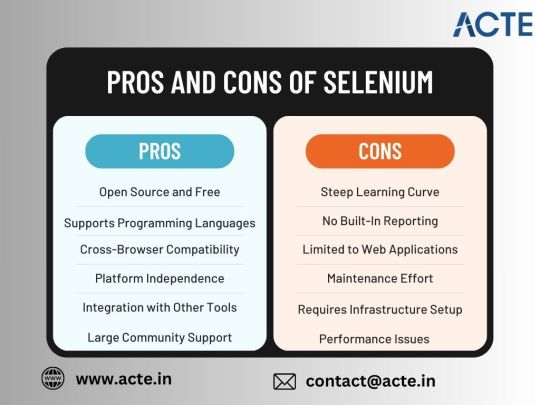
Challenges of Selenium
Learning Curve for Beginners Selenium requires knowledge of programming and web technologies like HTML, CSS, and JavaScript. For beginners, mastering these skills can be time-consuming.
No Built-In Reporting Selenium doesn’t provide native reporting capabilities. To generate comprehensive test reports, you’ll need to rely on third-party tools or libraries.
Limited to Web Testing Selenium is designed specifically for web applications and cannot test desktop or mobile apps directly. For mobile testing, additional tools like Appium are needed.
Script Maintenance As applications evolve, UI changes can break Selenium scripts. Maintaining and updating these scripts can require significant effort, especially in dynamic applications.
Complex Setup for Advanced Features Features like Selenium Grid, which enable parallel testing, require a sophisticated infrastructure setup. This can be resource-intensive and challenging for smaller teams.
Performance Constraints Selenium may experience performance issues with complex test cases or large datasets. Debugging failed tests can also take considerable time.
Selenium is an excellent option for teams seeking a cost-effective and adaptable solution for web application testing. It works best for organizations with skilled testers and developers who can manage its complexities.
For projects that require features beyond Selenium’s core capabilities—like built-in reporting or mobile app testing—teams might need to pair Selenium with complementary tools or explore alternative solutions. By understanding its benefits and challenges, you can determine if Selenium is the right fit for your automation testing strategy.
0 notes
Text
Boost Your Web Development Skills: Akhilagna’s Key Learning Resources
In the ever-evolving world of web development, staying ahead requires continuous learning and the ability to adapt to new tools, technologies, and methodologies. Whether you're an aspiring developer or a seasoned professional, accessing quality resources can make all the difference in boosting your skills. At Akhilagna IT, we understand the significance of empowering developers with the right learning tools and resources. This article highlights some of the key learning resources we offer to help you thrive in your web development journey.
Comprehensive Online Tutorials
Akhilagna’s curated online tutorials are designed to cater to developers at various skill levels. From foundational concepts like HTML, CSS, and JavaScript to advanced topics such as frameworks, libraries, and backend development, our tutorials provide step-by-step guidance. Each tutorial is enriched with real-world examples, ensuring that learners can directly apply what they learn in practical scenarios.
For beginners, we cover essentials like:
Structuring web pages with HTML
Styling elements using CSS
Interactive user interfaces with JavaScript
For advanced developers, topics include:
Working with modern frameworks like React, Angular, and Vue.js
Server-side programming with Node.js and Django
Managing databases using MongoDB and SQL
Interactive Coding Challenges
Learning by doing is one of the most effective ways to develop technical skills. Our platform offers interactive coding challenges that allow you to test your knowledge and sharpen your problem-solving abilities. These challenges are tailored to simulate real-world development tasks, such as debugging code, optimizing performance, and creating scalable web solutions.
Expert-Led Webinars and Workshops
At Akhilagna, we believe in the power of live learning experiences. Our expert-led webinars and workshops provide opportunities to learn from industry professionals who share their insights, experiences, and best practices. Topics range from the basics of responsive design to mastering cloud integration and DevOps practices.
Workshops often include hands-on projects, allowing participants to apply their skills under the guidance of experienced mentors. These sessions also provide a platform to ask questions, seek feedback, and interact with peers in the development community.
Resourceful Blogs and Articles
Our blog section is a treasure trove of articles covering a wide array of web development topics. Whether you're looking to understand the latest trends, explore in-depth tutorials, or discover tips for career growth, our blogs cater to diverse interests and needs. Written by experts, these articles provide actionable insights that can help you stay updated in this fast-paced field.
Project-Based Learning Opportunities
Akhilagna emphasizes the importance of project-based learning to bridge the gap between theory and practice. By working on real-world projects, developers can gain hands-on experience, build their portfolios, and develop a deeper understanding of web development concepts. These projects span areas like e-commerce site creation, API development, and single-page application (SPA) design.
Community Support and Collaboration
Becoming part of a supportive community can significantly enhance your learning experience. Akhilagna’s developer community offers a collaborative space where members can share ideas, seek advice, and discuss the latest trends in web development. Through forums, group projects, and networking events, developers can connect with like-minded professionals and expand their horizons.
Conclusion
In the dynamic landscape of web development, continuous learning is not just an option but a necessity. Akhilagna IT is dedicated to equipping developers with the knowledge, skills, and tools they need to excel. By leveraging our tutorials, coding challenges, webinars, and other resources, you can stay ahead in your career and tackle complex development challenges with confidence. Explore Akhilagnait Services offerings today and take the next step in your web development journey!
0 notes
Text
A Comprehensive Guide to WordPress Development with Examples

WordPress is the most popular content management system (CMS) globally, powering over 40% of websites on the internet. Whether you’re a beginner or a seasoned developer, WordPress offers unparalleled flexibility and scalability, making it the go-to platform for websites ranging from personal blogs to large-scale e-commerce stores. This blog will guide you through the fundamentals of WordPress development with practical examples.
Why Choose WordPress for Web Development?

WordPress is an excellent choice for web development due to its versatility, user-friendliness, and extensive ecosystem. Here are key reasons to choose WordPress:
Ease of Use: The intuitive interface makes it accessible for users with no coding experience.

Customizability: Thousands of themes and plugins allow developers to create unique, feature-rich websites.

SEO-Friendly: Built-in SEO tools and plugins like Yoast SEO ensure higher search engine rankings.

Community Support: A vast community of developers and users provides extensive documentation and troubleshooting help.
Cost-Effective: It’s open-source, reducing upfront costs, and many plugins and themes are free or affordable.
Scalability: Suitable for all project sizes, from small blogs to enterprise-level applications.
Most Common and Popular Uses of WordPress Development
WordPress is a versatile platform that supports a wide range of applications:
Blogs and Personal Websites: Ideal for bloggers and content creators to share ideas and stories.
E-Commerce Websites: Plugins like WooCommerce transform WordPress into a robust online store.
Business Websites: Professional websites for showcasing services, portfolios, and client testimonials.
Educational Platforms: Create e-learning websites with plugins like LearnDash or Tutor LMS.
Membership Sites: Restrict access to exclusive content using membership plugins.
News Portals and Magazines: Build dynamic websites with features like category filtering and custom layouts.
Portfolio Websites: Showcase creative work with visually appealing themes tailored for portfolios.
Click Here To Explore Your Knowledge About Wordpress Development
Key Components of WordPress Development
Themes:
Control the appearance and layout of a WordPress site.
2. Plugins:
Extend the functionality of WordPress.
3. Widgets and Shortcodes:
Widgets enhance the sidebar or footer.
Shortcodes embed custom functionality directly into posts or pages.
4. APIs:
WordPress REST API allows developers to interact with WordPress using JSON.
Benefits of WordPress Development

Flexibility: WordPress can support any type of website, from a simple blog to a full-fledged e-commerce site.
2. Extensive Plugin Ecosystem: With over 50,000 plugins, developers can add virtually any feature to a site.
3. Mobile-Responsive: Most WordPress themes are mobile-friendly, ensuring a seamless experience across devices.
4. Easy Maintenance: Regular updates to themes, plugins, and the core WordPress software ensure stability and security.
5. Large Community: Access to thousands of tutorials, forums, and resources for problem-solving and inspiration.
6. Integration Capabilities: Easily integrate with social media platforms, email marketing tools, and payment gateways.
Steps to Start WordPress Development
Set Up a Local Development Environment:
Use tools like XAMPP, MAMP, or Local by Flywheel.
Install WordPress locally and configure your database.
2. Learn the Basics of PHP, HTML, CSS, and JavaScript:
WordPress is built on PHP, with front-end elements using HTML, CSS, and JavaScript.
3. Understand WordPress Hierarchy:
Learn how templates like header.php, footer.php, and single.php work.
4. Work with the WordPress Codex:
The Codex provides extensive documentation for developers.
5. Experiment with Themes and Plugins:
Start by customizing existing themes and writing simple plugins.
Tips for Successful WordPress Development
Follow Best Practices: Use coding standards to ensure maintainable and secure code.
Leverage Child Themes: Avoid directly modifying core themes by using child themes.
Optimize Performance: Use caching plugins and optimize images for faster load times.
Secure Your Website: Implement SSL, regular updates, and strong authentication measures.
Conclusion
WordPress development offers endless possibilities for creating dynamic, feature-rich websites. By mastering its core components, leveraging its powerful APIs, and experimenting with customizations, you can develop applications tailored to diverse business needs. Start small, build your expertise, and soon you’ll be crafting WordPress solutions that stand out in today’s competitive digital landscape.
0 notes
Text
We recently compiled one of the biggest lists of best HTML tutorials. This list can be overwhelming for beginners. Therefore we wanted to handpick the top HTML resources for beginners. HyperText Markup Language or HTML is mainly used in making websites look fabulous. In fact, it is not a stretch to say that it is one of the building blocks of the World Wide Web itself. If you were to describe its most important characteristics, then they can encompass the following: It helps create web pages. It works with various kinds of HTML elements. It works with text, audio, video, images and so on. Along with CSS and JavaScript, it can be used to create any kind of website. Learning HTML is a rather interesting exercise and there are many ways in which you can start your journey to HTML expertise. Here is taking a look at the 5 best HTML tutorials for beginners. Code School As an online educational website, Code School has made learning rather creative and entertaining by taking a novel approach – every course is delivered like a story. Combine this with video, challenges, and gaming and you know you have a good thing going. For a beginner, technical jargon can be the most frustrating to deal with and Code School has taken that out of the equation when it comes to delivering courses on: Ruby Python PHP HTML of course. Getting started with HTML will see you getting familiar with how you can use HTML to not only build websites but also to make them stylish. It also promises to teach you the latest versions of HTML which can go a long way in promoting your career as a web developer. And the best part is that once you have mastered these basic tenets, you can go on to their intermediate and advanced courses as well. Considering that user experience is the main aim of using HTML, you can certainly master this design process rather easily with Code School. iLoveCoding They call themselves a coding boot camp and believe in giving you courses that are: Effective and simple. Value for your money. Self-paced. Short duration – you can learn HTML and CSS in just 14 days. Armed with this kind of knowledge and skill set, you can create a website in line with modern design trends. You can also go from learning the fundamentals of HTML to the most advanced levels as well. It is also useful that iLoveCoding believes in shoring up their lessons with simple to understand videos. So words like Attributes, Values and Tags – think of them as the ABCs of HTML – become familiar territory in no time at all. All you need to do is sit down in front of the laptop, watch the videos and learn as you go. The advantage is that you get to revisit a lesson any time you want. As you go along, you mark a lesson as completed and you get to see your progress on the path to HTML mastery. Basic Markup, textual and layout tags and other elements of HTML – everything gets covered in this course. Mozilla Developer Network or MDN Web technologies galore – that’s what sets MDN apart. This network covers: Web standards of which HTML is one. Firefox add-ons. Web app development. Web extensions. APIs and so on. One of the salient features of learning HTML with MDN is the fact that there are articles and tutorials aplenty. Simply visit their HTML learning area and get a grip on various things. There is also a well-stocked article library that will help you understand all HTML Basics and elements. With easy examples and illustrations of HTML in use, it really does make it easy to understand the anatomy of this markup language and see what is an opening tag, a closing tag, content, element and so on. As you move along, you will get to see more such as nesting elements, attributes, empty elements and so on. MDN also will take you through images and the different elements that come into play when embedding images or developing a website for visually impaired people. Whether it is headings, paragraphs, text or links, you can learn how to integrate every facet into a website.
Codecademy When you read up on this company, the first thing that will strike you is that they call themselves an education company. But they focus on the web as a tool of education. Here again, CSS and HTML go hand in hand and you can learn how to add layers of structure and character to your websites by learning all about HTML. Among other things, their syllabus covers: All the fundamentals of HTML. Interactive lessons. Tutorials on how to create a webpage on your computer and view the same as well. You will also get to know all HTML elements and participate in some very interesting quizzes too. One of the keystones of this online tutorial is the interactive lessons. It can go a long way in teaching people about HTML especially when they have absolutely no idea of it all. And if you want to have more experience with HTML you can always opt for their paid courses as well. W3Schools This site is very controversial and not liked by many people for various reasons in past. However, this is the site that will always pop up on Google search results. Mainly since it solves some very basic problems with simple examples. This site is the brainchild of a software development company. Since the tutorial is aimed at a beginner, W3Schools offers simple illustrations and explanations to get the lessons across. There are many examples to choose from and you get to use an online editor to try out all that you learn. The big advantage of this type of Try It Yourself learning is that you can check out what works and then implement it in the project or website that you want to create. Executing computer code is one of the tough parts of learning HTML and when you get the opportunity to try it beforehand, then it really does make things a lot easier. With a combination of tutorials, lessons, quizzes, and exercises, a beginner can really gain a lot of confidence every step of the way. Testing newfound skills at HTML can also be the perfect way to course correct and opt for the more advanced levels at a later point in time. Article Updates Updated on June 2017 - Fixed minor issues and updated links.
0 notes
Text
If you are interested in learning how to code, there are many options available to you. You can take a coding course online, such as Webturor. Webtutor is organized online web tutorial and helpful easy to understand Web building tutorials with many example how to use HTML, CSS, JavaScript, jQuery and More. These programs provide coding tutorial, that will teach you everything you need to know to get started with coding. Ultimately, learning how to code is a valuable skill that can lead to many opportunities in various industries. Whether you are interested in web development & app development, learning to code can help you achieve your goals. So why not start today? Learn to code for beginners and discover the endless possibilities of coding!
#learn to code for free#learn coding for free#coding course online#online tutorial#Online Web Tutorial#learn code#learn code for free#school of coding#introduction to coding#learn html#learn css#learn javascript#programming training courses#how to learn coding for free#best way to learn coding#how long does it take to learn coding#learn coding for beginners#how long does it take to learn to code#learning how to code for free#how long to learn coding#why learn to code#best code learning websites#best coding language to learn first#best way to learn code#how long does it take to learn how to code
0 notes
Text
Evolving with Code: A Year in the Honours Bachelor of Computer Science in Leeds
Introduction As a student in the Honours Bachelor of Computer Science program at the University of Leeds, I have had the opportunity to evolve and grow as a programmer over the past year. This article will take you through my journey, highlighting the key skills I have developed, the challenges I have faced, and the experiences that have shaped me into the programmer I am today. Learning the Fundamentals The first semester of my program was all about laying the groundwork for my future studies. I was introduced to the basics of programming languages such as Java, Python, and C++. I spent countless hours practicing coding exercises, participating in group projects, and attending lectures to ensure I had a solid understanding of the material. Building Projects As I progressed through the program, I began to work on more complex projects that allowed me to apply my knowledge in real-world scenarios. I developed a mobile app using Java and Android Studio, which taught me about user interface design, database management, and problem-solving. I also worked on a web development project using HTML, CSS, and JavaScript, which helped me understand the importance of web architecture, scalability, and security. Working with a Team One of the most valuable experiences I had during my first year was working with a team on a group project. We were tasked with developing a game using C++ and OpenGL, which required us to collaborate, communicate, and manage our time effectively. This project taught me the importance of teamwork, conflict resolution, and adaptability. Challenging Assignments Throughout the year, I encountered challenging assignments that pushed me out of my comfort zone. One assignment required me to develop a chatbot using natural language processing (NLP) and machine learning algorithms. This project was particularly challenging because it forced me to think creatively and develop a deep understanding of AI concepts. Conclusion As I look back on my first year in the Honours Bachelor of Computer Science program at the University of Leeds, I am proud of the progress I have made. I have developed a strong foundation in programming languages, built projects that showcase my skills, worked with a team, and overcome challenging assignments. I am excited to see what the future holds and how I will continue to evolve as a programmer. FAQs How do I get started with programming? Start by learning the basics of a programming language such as variables, data types, and control structures. Why is programming important? Programming is important because it allows you to automate tasks, solve complex problems, and create innovative solutions. Are programming languages similar? While programming languages share some similarities, each language has its own unique features, syntax, and use cases. Do I need to know math to be a programmer? While math is not essential for programming, having a strong understanding of mathematical concepts such as algebra and geometry can be helpful. Where can I find resources to learn programming? There are many online resources available to learn programming, including tutorials, online courses, and coding communities. Which programming language should I learn first? The best programming language to learn first is often dependent on your goals and interests. Popular choices for beginners include Python, JavaScript, and HTML/CSS. Who can help me with programming? You can find help with programming from online communities, coding mentors, and programming professionals. Will I be able to get a job with a degree in computer science? Yes, a degree in computer science can lead to a wide range of job opportunities in the tech industry. When should I start building my own projects? You can start building your own projects as soon as you feel comfortable with the basics of programming. This will help you apply your knowledge and develop your problem-solving skills. #Evolving #Code #Year #Honours #Bachelor #Computer #Science #Leeds
0 notes
Text
Best Python Full Stack Institute in Hyderabad - Version IT
Looking to become a proficient full-stack developer? The journey starts with choosing the right institute. Version IT, the leading Python Full Stack Institute in Hyderabad, offers a comprehensive training program tailored to equip you with the skills required to excel in today’s tech-driven world. Whether you're a beginner or an experienced professional, our courses provide hands-on learning that bridges the gap between theoretical knowledge and real-world applications.
What is Python Full Stack Development?
Python Full Stack Development refers to the ability to work on both the front-end and back-end aspects of web applications. It involves mastering:
Front-End Technologies: HTML, CSS, JavaScript, and responsive frameworks.
Back-End Programming: Python frameworks like Django and Flask.
Database Management: SQL and NoSQL databases for storing and retrieving data.
Server Management: Deployment and maintenance of web applications on various platforms.
With Python's versatility and widespread adoption, full-stack developers with Python expertise are in high demand across industries.
Features of Our Python Full Stack Course in Hyderabad
At Version IT, we’ve designed our Python full stack training in Hyderabad to provide a balanced mix of theory and practical knowledge. Here’s what makes our course stand out:
Comprehensive Curriculum: Covering everything from Python programming basics to advanced concepts in Django, Flask, and database management.
Hands-On Projects: Work on live applications to build your portfolio and gain practical experience.
Industry-Expert Trainers: Learn from professionals with years of experience in full-stack development.
Interactive Learning: Participate in workshops, tutorials, and real-world simulations.
Flexibility: Opt for in-person classes in Ameerpet or choose Python full stack online training in Hyderabad for remote learning.
Why Choose Version IT for Python Full Stack Training?
Expert Trainers: Our instructors bring invaluable industry experience, ensuring that you receive practical insights alongside theoretical knowledge.
Updated Curriculum: Stay ahead with a syllabus aligned with the latest industry trends.
Placement Assistance: Benefit from career guidance and job placement support to land your dream job.
Prime Location: Our institute is located in Ameerpet, Hyderabad’s hub for IT training.
State-of-the-Art Infrastructure: Learn in a modern, well-equipped environment that fosters growth.
What You’ll Learn in the Python Full Stack Course
Programming Fundamentals: Python basics, OOPs, and advanced concepts.
Web Development: Master Django, Flask, HTML, CSS, and JavaScript.
Database Management: Work with SQL (MySQL) and NoSQL (MongoDB) databases.
Project Deployment: Learn how to deploy applications using tools like AWS, Heroku, or Docker.
Real-World Applications: Develop live projects to showcase your skills and enhance your resume.
Outcomes of the Python Full Stack Course
After completing our Python full stack course in Hyderabad, you will:
Have the skills to design and develop end-to-end web applications.
Be proficient in both client-side and server-side programming.
Be prepared for roles like Full-Stack Developer, Web Developer, or Back-End Developer.
Have a strong portfolio of projects to impress potential employers.
Flexible Online Training Options
For those unable to attend in-person classes, our Python full stack course online offers:
Live instructor-led sessions.
Access to recorded lectures and resources.
Interactive Q&A sessions and project reviews.
The flexibility to learn at your own pace from anywhere.
Enroll in the Best Python Full Stack Institute in Hyderabad
At Version IT, we’re committed to your success. Our Python full stack course in Hyderabad combines expert training, practical experience, and career support to ensure you achieve your professional goals. Whether you’re just starting out or looking to upskill, Version IT has the tools and expertise to help you thrive.
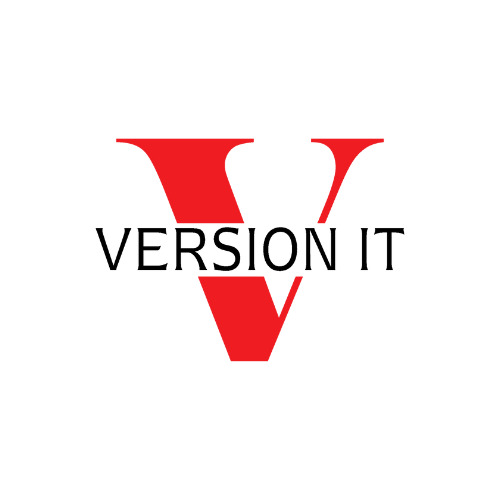
0 notes
Text
The Ultimate Guide: Why Elmadrasah for Programming Is Your Best Choice
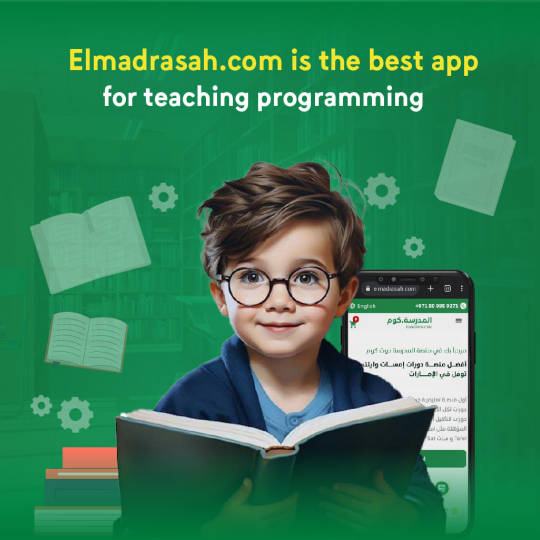
In today’s fast-paced digital world, programming has become an essential skill for anyone looking to succeed in various fields. Whether you’re interested in web development, data science, artificial intelligence, or simply understanding how technology works, learning programming is your gateway to endless opportunities. One platform that stands out in the realm of programming education is Elmadrasah for Programming. This article will explore why programming is crucial, how to start your learning journey, and the vital role Elmadrasah.com plays in simplifying and enriching your experience.
Why Learn Programming?
Programming is more than just writing code. It’s about solving problems, automating tasks, and creating innovative solutions that shape the future. Here are some reasons why learning programming is essential:
1. High Demand for Programmers
The demand for skilled programmers is skyrocketing. Companies in various industries, from tech giants to small startups, are actively seeking professionals who can develop software, manage databases, and create cutting-edge technologies.
2. Versatility Across Fields
Programming is not limited to the tech industry. Fields like healthcare, education, finance, and entertainment increasingly rely on programming to improve efficiency and innovation.
3. Better Career Opportunities
With programming skills, you can unlock lucrative career paths such as software development, data analysis, and game development. These roles often come with competitive salaries and flexible working conditions.
4. Empowering Creativity
Programming allows you to bring your ideas to life. Whether it’s building a personal website, creating an app, or developing a game, the possibilities are endless.
5. Future-Proof Your Skills
As technology evolves, programming will remain a foundational skill. Learning it now ensures you stay relevant in the ever-changing job market.
How to Start Learning Programming
Starting your programming journey can feel overwhelming, but with the right guidance and tools, it becomes manageable. Here are some steps to get you started:
1. Choose a Programming Language
Beginners often start with languages like Python, JavaScript, or HTML/CSS because they are user-friendly and versatile.
2. Set Clear Goals
Determine what you want to achieve. Are you looking to build websites, develop mobile apps, or analyze data? Your goals will guide your learning path.
3. Find Reliable Resources
Use trusted platforms like Elmadrasah for Programming to access high-quality tutorials, practice exercises, and mentorship.
4. Practice Regularly
Programming requires consistent practice. Start small by solving simple problems and gradually work your way up to complex projects.
5. Join a Community
Engage with other learners and professionals to exchange ideas, seek help, and stay motivated.
The Role of Elmadrasah for Programming
When it comes to learning programming, choosing the right platform can make all the difference. Elmadrasah for Programming is an innovative online learning platform that specializes in making programming accessible to everyone, regardless of their background or experience level.
Why Choose Elmadrasah for Programming?
1. Comprehensive Courses
Elmadrasah for Programming offers a wide range of programming courses, from beginner-friendly introductions to advanced topics like machine learning and cybersecurity.
2. Flexible Learning Options
One of the standout features of Elmadrasah for Programming is its commitment to remote learning. You can access courses anytime, anywhere, allowing you to balance education with other commitments.
3. Interactive Learning Experience
The platform combines video tutorials, interactive coding challenges, and real-world projects to provide a hands-on learning experience.
4. Expert Instructors
Elmadrasah for Programming partners with experienced programmers and educators to ensure high-quality instruction and mentorship.
5. Affordable and Accessible
Unlike many other platforms, Elmadrasah for Programming is designed to be affordable, ensuring that quality education is accessible to everyone.
6. Supportive Community
Elmadrasah.com fosters a supportive environment where learners can connect, share ideas, and help each other grow.
Conclusion
Programming is no longer just a skill for tech enthusiasts; it’s a necessity in today’s digital era. Platforms like Elmadrasah for Programming make learning programming easier, more accessible, and highly effective. Whether you’re a complete beginner or looking to enhance your existing skills, Elmadrasah.com is your ultimate partner in achieving your goals.
0 notes
Text
What Are the Best Online Web Development Courses?
Web development is a skill in high demand, with businesses of all sizes seeking professionals to create, maintain, and optimize their digital presence. Whether you’re a beginner or looking to advance your skills, finding the right web development course is crucial. In this blog, we’ll explore the best online web development courses and show you why Skiloveda stands out as a top choice.
Why Learn Web Development?
Web development is the backbone of the internet, enabling you to build websites, web applications, and much more. Here are some reasons to pursue web development:
High Demand: The need for skilled web developers is growing rapidly.
Lucrative Careers: Web developers enjoy competitive salaries and opportunities for advancement.
Creative Freedom: Build unique, functional, and visually appealing websites.
Flexible Work Options: Many web developers work remotely or freelance.
Key Features of the Best Web Development Courses
When selecting a web development course, look for the following:
Comprehensive Curriculum: Covers front-end and back-end development.
Hands-On Projects: Real-world projects to apply your learning.
Expert Instructors: Taught by experienced professionals.
Flexibility: Self-paced learning to fit your schedule.
Certifications: Earn credentials to boost your resume.
Best Online Web Development Courses
1. Skiloveda’s Web Development Courses
Skiloveda offers an exceptional range of web development courses tailored to all skill levels. Here’s why Skiloveda is a top choice:
Comprehensive Content: Learn everything from HTML, CSS, and JavaScript to advanced frameworks like React, Angular, and Node.js.
Practical Projects: Build real-world projects, such as responsive websites and web applications.
AI Career Assistant: Skiloveda’s AI-powered assistant, CHIKU, helps you choose courses and create a personalized learning path.
Affordable Learning: Access premium courses at competitive prices.
Certification: Earn industry-recognized certificates to showcase your expertise.
2. freeCodeCamp
Offers free tutorials and projects.
Ideal for beginners looking for self-guided learning.
Covers a wide range of web development topics.
3. Codecademy
Interactive learning platform with hands-on coding.
Offers beginner to advanced-level courses.
Focus on practical skills and career readiness.
4. Udemy
Features thousands of web development courses.
Learn at your own pace with lifetime access.
Courses often taught by industry professionals.
5. Coursera
Offers courses from top universities and companies.
Includes certifications from reputed institutions.
Covers beginner to advanced topics in web development.
Why Choose Skiloveda?
While there are many options for online web development courses, Skiloveda offers unique advantages:
All-in-One Platform: From beginner basics to advanced frameworks, everything is covered.
Community Support: Connect with other learners and industry experts.
Job-Ready Skills: Learn the tools and techniques needed to succeed in the workforce.
Regular Updates: Courses updated to reflect the latest trends and technologies.
Start Your Web Development Journey Today
Web development is more than just a skill — it’s a gateway to creativity, innovation, and career success. Whether you’re starting from scratch or upskilling, Skiloveda’s web development courses provide everything you need to thrive.
0 notes
Text
From Frustration to Automation: Learning Selenium Made Simple
Learning Selenium can feel overwhelming at first, but with the right approach, you can transform frustration into seamless automation. Selenium is a powerful tool for automating web browsers, making it a must-have skill for testers and developers. If you want to advance your career at the Selenium Course in Pune, you need to take a systematic approach and join up for a course that best suits your interests and will greatly expand your learning path. While the learning curve may seem steep, breaking it down into manageable steps can make the journey much simpler. This blog outlines common challenges in learning Selenium and provides easy-to-follow solutions to help you succeed.

1. Selenium Requires a Mix of Skills
Selenium isn’t something you can master in isolation. For those looking to excel in Selenium, Selenium Online Course is highly suggested. Look for classes that align with your preferred programming language and learning approach. To use it effectively, you’ll need:
Programming knowledge in a language like Python, Java, or C#.
An understanding of web development concepts, including HTML, CSS, and JavaScript.
Familiarity with testing basics, such as test cases, assertions, and automation frameworks.
For beginners, juggling these skills might feel daunting, like trying to learn multiple subjects at once.
Solution: Start small. Focus on learning one programming language and the basics of web technologies before diving into Selenium-specific tasks.
2. Dynamic Web Pages Add Complexity
Modern web applications built with frameworks like React, Angular, or Vue often have dynamic and interactive components. These can make identifying and interacting with web elements more challenging, especially when they load asynchronously or change structure frequently.
Selenium can handle these scenarios, but figuring out the right locators and interaction methods can be tricky.
Solution: Learn how to use Selenium locators such as ID, XPath, and CSS selectors effectively. Browser developer tools (F12) are invaluable for inspecting and understanding the elements on a webpage.
3. Debugging Selenium Tests Can Be Frustrating
Failures in Selenium tests are common, and diagnosing them can feel like a guessing game. Is the problem due to a slow-loading element? A flawed locator? Or perhaps an unexpected browser behavior?
Solution: Use explicit waits to deal with dynamic content and reduce timing issues. Write meaningful logs and error messages to identify problems quickly. Screenshots and debugging tools can also provide clarity when tests fail.
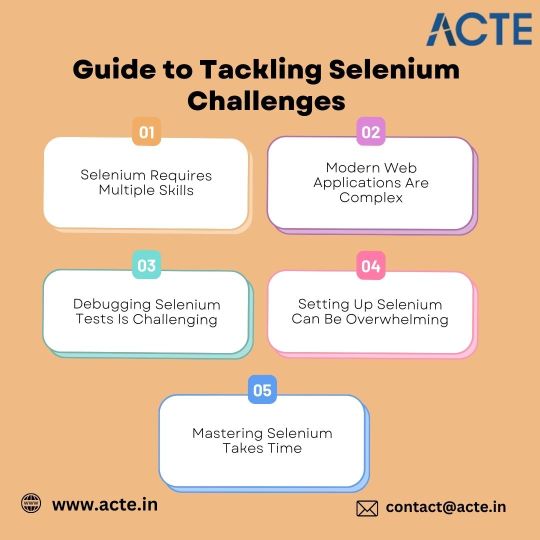
4. The Initial Setup Feels Overwhelming
Getting started with Selenium requires setting up several tools, such as:
Web drivers (e.g., ChromeDriver, GeckoDriver) for browser interaction.
Test runners like PyTest or JUnit to manage and execute your tests.
Additional integrations with CI/CD pipelines, reporting tools, or cloud platforms for extended functionality.
For newcomers, this setup process can seem intimidating.
Solution: Follow detailed tutorials to configure your environment step by step. Start with simple projects and gradually expand as you gain confidence and experience.
5. Practice Is Key to Mastering Selenium
Like any skill, learning Selenium takes time and consistent practice. Writing robust and maintainable tests often involves trial and error, especially for complex web applications.
Solution: Be patient. Begin with small tasks, such as automating a login form, and gradually work your way up to more advanced projects. Celebrate your progress along the way to stay motivated.
Final Thoughts
Learning Selenium doesn’t have to be frustrating. By starting with the basics, addressing challenges step by step, and practicing regularly, you can simplify the learning process and master web automation. With persistence and the right mindset, you’ll soon turn frustration into a powerful ability to automate repetitive tasks and streamline workflows.
0 notes
Text
Learn Coding Online: A Beginner’s Guide to Kickstart Your Programming Journey
In today’s tech-driven world, learning to code is an essential skill that opens doors to exciting career opportunities and personal growth. Whether you aspire to become a software developer, data scientist, or web designer, learn coding online offers the flexibility and resources you need to get started.
The first step to
is choosing a programming language that aligns with your goals. Beginners often start with Python, JavaScript, or HTML/CSS because of their simplicity and versatility. Online platforms like CodeWithTLS and other reputed providers offer some of the best programming courses designed to guide beginners step by step.
Interactive tutorials, project-based learning, and mentorship programs make it easier than ever to master the basics. Many platforms offer free or affordable resources to ensure anyone can start their journey, regardless of budget.
By choosing to learn coding, you acquire technical skills, problem-solving abilities, and creativity. Building projects like apps or websites allow you to apply your knowledge practically.
Whether you’re a student, working professional, or hobbyist, there’s no better time to dive into coding. Enroll in the best programming courses today and kickstart your journey towards becoming a tech-savvy professional.
0 notes